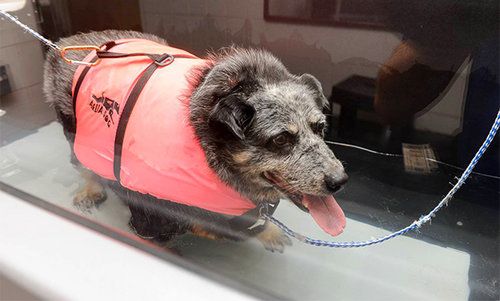Legg–Calvé–Perthes Disease in Dogs

LCP Overview
Legg-Calve-Perthes Disease (LCP) is a painful hereditary disease that affects young, small-breed dogs and terrier breeds. For some unknown reason, the neck and head of the dog’s femur (the long upper leg bone that joins the pelvis to form the hip joint) spontaneously degenerates and dies, causing the ball-and-socket hip joint to deteriorate and, ultimately, to collapse.
Once this happens, the affected dog cannot bear weight on that hip, because the joint has completely lost its structural integrity. Legg-Perthes disease is an irreversible disorder that causes hind limb lameness, pain and disfigurement of affected hip joints.
Left untreated, this condition will progress the hip joint will continue to deteriorate and the dog’s pain and other symptoms will worsen and become more obvious.
Symptoms
Symptoms include hind limb lameness, limping, pain upon flexion and/or extension, reluctance to rise, run, jump or play, general overall weakness, exercise intolerance, muscle atrophy, irritability, chewing, licking, bothering the affected hip joint, audible clicking or snapping coming from the hip joint during movement or when rising.
Diagnosis
Legg-Calve-Perthes Disease is diagnosed by a physical exam and X-rays. X-ray images will show whether or not there is deterioration of the femoral head of your dog’s femur.
Affected Breeds
LCP is typically seen in dogs between six and nine months of age. It equally affects both male and female dogs. The disease primarily affects young dogs, especially terrier and toy breeds. Here are some breeds most impacted by LCP.
Treatment Options
Fortunately, surgical and non-surgical treatments are available to help alleviate pain and improve the dog’s quality of life.
The most common treatment of Legg-Calve-Perthes Disease is surgery. The operation is called a femoral head and neck excision. These procedures are extremely successful as long as you adhere to post-op instructions.
Typical post-op rehabilitation includes light walking, swimming and massage therapy.
Cost of Treatment
If your dog suffers from Legg-Calve-Perthes Disease you can expect to spend between $2,000 to $4,000 on surgery, medications and post-op rehabilitation.
The good news is that surgical outcomes are very successful.
Veterinary surgery can cost thousands of dollars when your dog gets sick or injured. Pet insurance helps pay the bills when you and your dog need it the most. Learn about the benefits of pet health insurance and buy a policy before your dog need expensive life-saving treatment.
Related Content




















